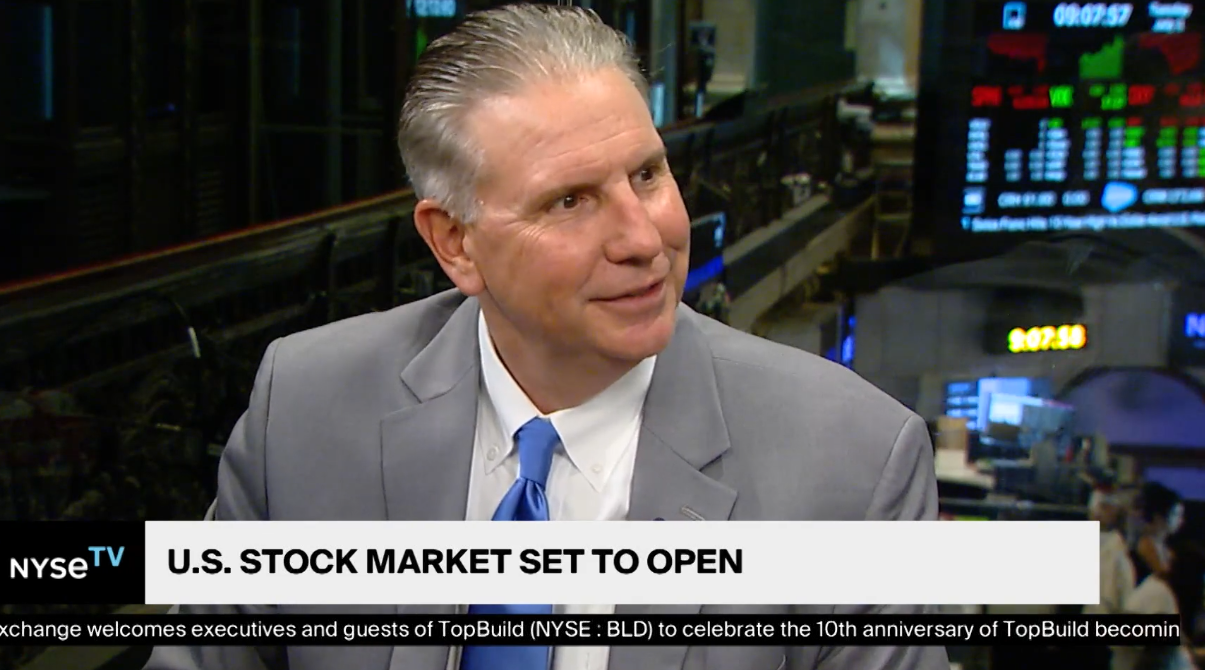
Oil Surges while Stocks Finish Flat
Market Overview
Sources: Sources for data in tables: Equity Market and Fixed Income returns are from JP Morgan as of 7/21/17. Rates and Economic Calendar Data from Bloomberg as of 7/24/17. International developed markets measured by the MSCI EAFE Index, emerging markets measured by the MSCI EM Index. Sector performance is measured using GICS methodology. S&P 500 earnings data from Factset as of 7/21/17.
Happening Now
U.S. equities, as measured by the S&P 500 Index, finished flat last week as the tailwind of higher oil prices was offset by a selloff in the Technology sector. Smaller U.S. companies faced the brunt of selling pressure with the Russell Midcap Index declining 0.2% during the week and the Russell 2000 Index falling 0.4%. Internationally, stocks continued their winning ways with Developed Markets gaining 0.2% and Emerging Markets advancing 0.3% last week.
It is worth noting that in terms of style, Growth stocks have continued to dominate their Value counterparts across all capitalizations thus far in 2017. For example, the Russell 1000 Growth Index has enjoyed an outstanding 17.4% return this year while the Russell 1000 Value Index is up “just” 5.9% over the same time period. The 6% gain Value stocks have enjoyed over the past seven months is impressive but the bigger story is that they trail Growth stocks by 11.5%! The divergence in performance among these two styles makes sense to us, since, in an era of slow growth, firms that are able to organically grow sales will generally find themselves in higher demand. Investors need to not only have a grasp on how their portfolio is divided across styles but also have an appreciation for what drives their relative performance.
WTI Crude Oil gained 8.6% last week following production cut announcements from Saudi Arabia and Russia. Last week’s gain represented the largest weekly increase in the price of oil since 2016. Energy stocks, in turn, gained nearly 2% on the week and were the second best performing sector behind Telecommunication Services companies. Unfortunately for those overweight energy stocks, the sector is still down over 10% since the start of the year even after factoring in the attractive dividends many energy companies distribute. While the price of oil has proven to be unpredictable, we are encouraged (from an investment viewpoint) by the de-regulation that has taken place and by the strength of the companies that have survived two years of depressed oil prices. Many of the weaker firms that were overburdened by high fixed costs were unable to survive and have since gone bankrupt or just left the industry. What remains is a thinned out energy sector with firms able to be profitable with oil around $45 a barrel.
The Federal Reserve also met last week and left rates unchanged. They did, however, adjust the language of their statement to say that their balance sheet reduction will commence “relatively soon” instead of saying at some point “this year.” This was taken as an indication that they may begin this process in September, despite persistently low inflation. In other economic data reports, the first look at second quarter GDP was released on Friday and showed that U.S. economy grew at an annual pace of 2.6% versus the second quarter of last year, in line with expectations.
The theme this year has mostly been a change in market leadership from the previous year – Large Cap stocks have consistently outperformed Small Caps, Growth stocks have outperformed Value, International stocks have outperformed the U.S., and Emerging markets have outperformed developed markets. Steady performance, similar to low volatility, has likely been driven by reduced macroeconomic surprises as well as the slow, steady, and synchronized growth the global economies have enjoyed in 2017. We continue to caution, however, that volatility is likely to pick up from here and short term sell-offs are almost always an unpredictable possibility.
Important Information and Disclaimers
Disclosures: Hennion & Walsh is the sponsor of SmartTrust® Unit Investment Trusts (UITs). For more information on SmartTrust® UITs, please visit www.smarttrustuit.com. The overview above is for informational purposes and is not an offer to sell or a solicitation of an offer to buy any SmartTrust® UITs. Investors should consider the Trust’s investment objective, risks, charges and expenses carefully before investing. The prospectus contains this and other information relevant to an investment in the Trust and investors should read the prospectus carefully before they invest.
Investing in foreign securities presents certain risks not associated with domestic investments, such as currency fluctuation, political and economic instability, and different accounting standards. This may result in greater share price volatility. These risks are heightened in emerging markets.
There are special risks associated with an investment in real estate, including credit risk, interest rate fluctuations and the impact of varied economic conditions. Distributions from REIT investments are taxed at the owner’s tax bracket.
The prices of small company and mid cap stocks are generally more volatile than large company stocks. They often involve higher risks because smaller companies may lack the management expertise, financial resources, product diversification and competitive strengths to endure adverse economic conditions.
Investing in commodities is not suitable for all investors. Exposure to the commodities markets may subject an investment to greater share price volatility than an investment in traditional equity or debt securities. Investments in commodities may be affected by changes in overall market movements, commodity index volatility, changes in interest rates or factors affecting a particular industry or commodity.
Products that invest in commodities may employ more complex strategies which may expose investors to additional risks.
Investing in fixed income securities involves certain risks such as market risk if sold prior to maturity and credit risk especially if investing in high yield bonds, which have lower ratings and are subject to greater volatility. All fixed income investments may be worth less than original cost upon redemption or maturity. Bond Prices fluctuate inversely to changes in interest rates. Therefore, a general rise in interest rates can result in the decline of the value of your investment.
Definitions
MSCI- EAFE: The Morgan Stanley Capital International Europe, Australasia and Far East Index, a free float-adjusted market capitalization index that is designed to measure developed-market equity performance, excluding the United States and Canada.
MSCI-Emerging Markets: The Morgan Stanley Capital International Emerging Market Index, is a free float-adjusted market capitalization index that is designed to measure the performance of global emerging markets of about 25 emerging economies.
Russell 3000: The Russell 3000 measures the performance of the 3000 largest US companies based on total market capitalization and represents about 98% of the investible US Equity market.
ML BOFA US Corp Mstr [Merill Lynch US Corporate Master]: The Merrill Lynch Corporate Master Market Index is a statistical composite tracking the performance of the entire US corporate bond market over time.
ML Muni Master [Merill Lynch US Corporate Master]: The Merrill Lynch Municipal Bond Master Index is a broad measure of the municipal fixed income market.
Investors cannot directly purchase any index.
LIBOR, London Interbank Offered Rate, is the rate of interest at which banks offer to lend money to one another in the wholesale money markets in London.
The Dow Jones Industrial Average is an unweighted index of 30 “blue-chip” industrial U.S. stocks.
The S&P Midcap 400 Index is a capitalization-weighted index measuring the performance of the mid-range sector of the U.S. stock market, and represents approximately 7% of the total market value of U.S. equities. Companies in the Index fall between S&P 500 Index and the S&P SmallCap 600 Index in size: between $1-4 billion.
DJ Equity REIT Index represents all publicly traded real estate investment trusts in the Dow Jones U.S. stock universe classified as Equity REITs according to the S&P Dow Jones Indices REIT Industry Classification Hierarchy. These companies are REITSs that primarily own and operate income-producing real estate.




